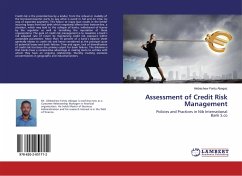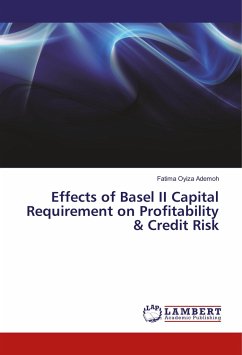Credit risk is the potential loss by a lender, from the refusal or inability of the borrower/counter party to pay what is owed in full and on time, by way of expected payments. This failure to repay loan results in the lender incurring losses from bad debt which negatively affects their bottom-line, a situation, which may lead to the collapse of banks, withdrawal of license by the regulator as well as tarnishing the reputation of these organizations. The goal of credit risk management is to maximize a bank's risk adjusted rate of return by maintaining credit risk exposure within acceptable parameters. More than 70 percent of a bank's balance sheet generally relates to credit risk and hence considered as the principal cause of potential losses and bank failures. Time and again, lack of diversification of credit risk has been the primary culprit for bank failures. The dilemma is that banks have a comparative advantage in making loans to entities with whom they have an ongoing relationship, thereby creating excessive concentrations in geographic and industrial sectors.








